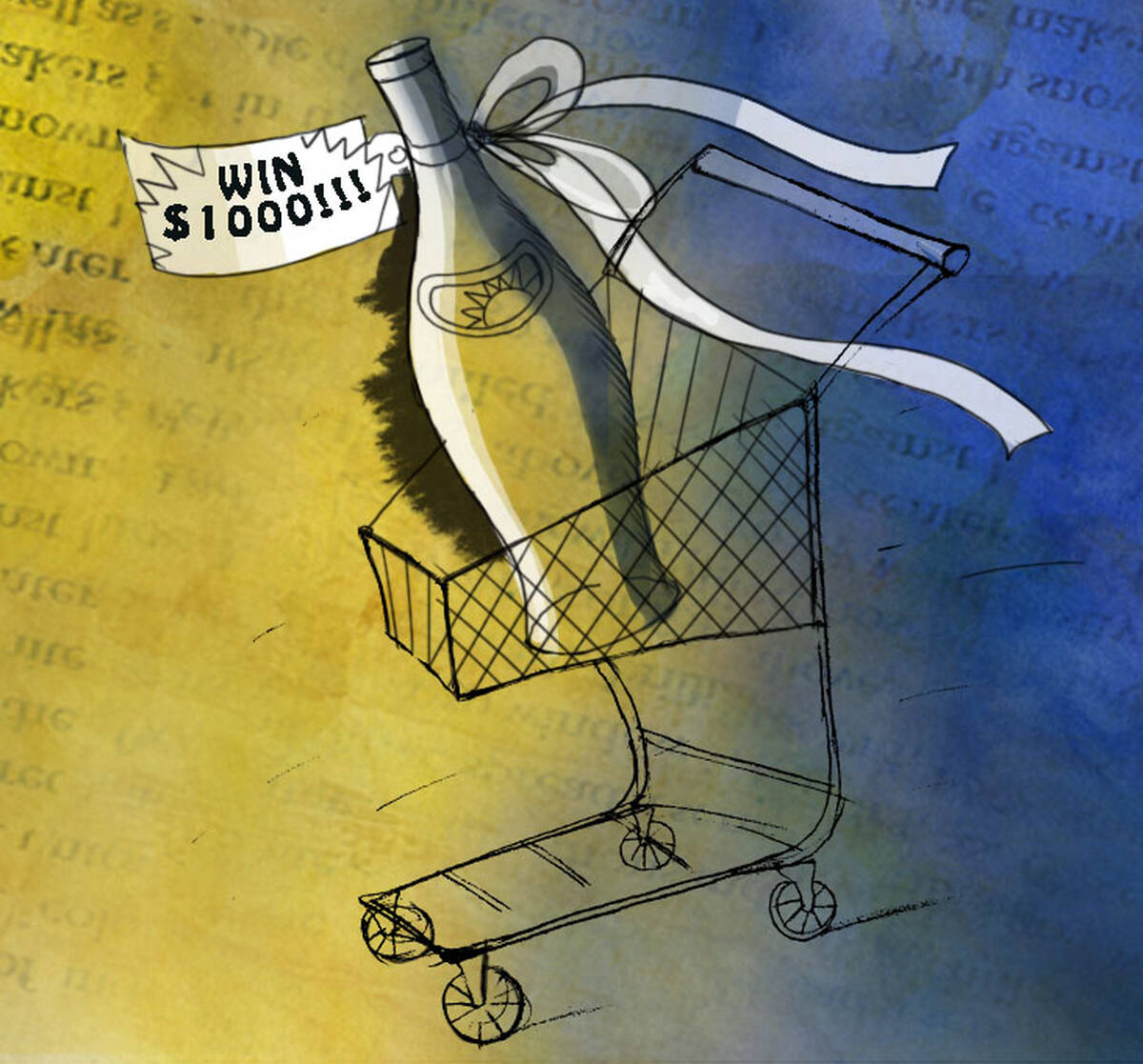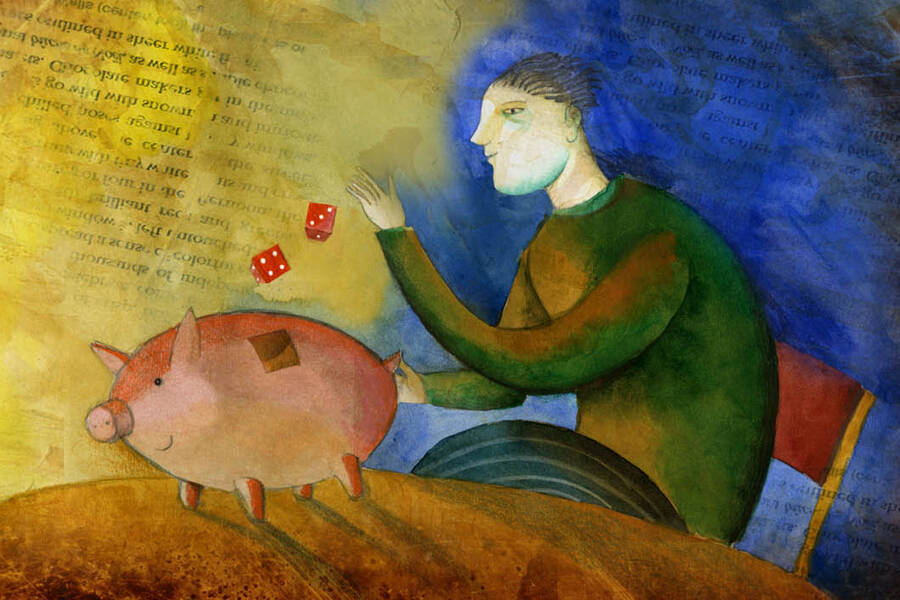Marketing Mar 2, 2015
Offering Points and Prizes Can Draw Customers
We overestimate how likely we are to win, making us willing to take a gamble on low-cost purchases.

Yevgenia Nayberg
Admit it: at some point you’ve considered buying one of those scratch-off lottery cards at the local corner store. Someone has to win, right? Maybe you have even participated in a risk-based endeavor like last year’s MyCoke promotion. MyCoke offered points under bottle caps for cool prizes like cameras and trips. And as you handed over your cash for those soft drinks, you reasoned that you just might win. Perhaps on a whim you also bought some McDonald’s fries to get a chance at last year’s Monopoly-game promotion. After all, you rationalized, fries are not exactly a high-cost item.
So goes the push and pull of decision making that Kelly Goldsmith, an assistant professor of marketing at the Kellogg School of Management, and On Amir, an associate professor at the University of California–San Diego, explore in their study of product promotions and uncertainty. Marketers need to attract consumer dollars, the researchers remind us, but they also need to remain cost effective, so incentives such as MyCoke and McDonald’s Monopoly game are tools of their trade. But how often do consumers have to win to make the promotion worthwhile? Might they jump in regardless of the uncertainty?
It turns out consumers will take the risk either way, Goldsmith found. “In the research on psychology and in a lot of research on judgment in decision-making, uncertainty gets a bad rap,” Goldsmith says. “There’s a lot of literature that says that people prefer riskless benefits—the ‘sure’ thing of getting a good prize—over any sort of ‘risky’ benefit.” And that assumption makes intuitive sense, Goldsmith says, because no one wants to be a loser, or at least feel like one.
“On the other hand, there are a lot of consumer promotions we see that involve uncertainly—like a sweepstakes where you’ve got a 1 in 100 chance of winning something, and people must on some level know” they stand to lose, Goldsmith says. Yet people take the 1 in 100 chance anyway, she says.
“Most people most of the time have a pretty optimistic outlook.”
Getting To the Bottom of It
The question is whether people are kidding themselves by responding positively—through “rose-colored glasses,” as Goldsmith puts it—to product promotions like the MyCoke example, which carried so much uncertainty. To investigate, Goldsmith and Amir designed a study to examine retailers’ prevalent use of uncertainty and consumers’ apparent confidence because, as the study paper points out, consumers “expect to receive the best possible outcome.”
To find out where consumers draw the line on risk, Goldsmith looked first at how confident consumers are in their chances of winning. “Most people most of the time have a pretty optimistic outlook,” she says, adding that that can-do outlook extends to things we think we are good at, relative to others. Optimism also reigns with negative outcomes. “We think we’re less likely to have horrible life events happen to us than to other people,” Goldsmith says.
At work are two types of optimism: Conscious optimism allows a person to know the base rate for a potentially risky enterprise—opening a restaurant, for example, where the odds of success are a paltry 60 percent. Even with this knowledge, the fledgling restaurateur, under the spell of conscious optimism, thinks, “I’m lucky; I’ve got a good idea. That 60 percent doesn’t apply to me.”
The second category is innate optimism, which is intuitive and positive, yet has boundaries ringed by dollar signs. “If I’m in a high-stakes gambling scenario, I’m not going to come into it with an innate optimistic response,” Goldsmith says, “because by definition the nature of the scenario is going to make me…hesitant, calculating. I’m going to figure out the odds because there’s a lot hanging on that.”
Accordingly, Goldsmith and Amir limited their study to low-stakes scenarios, like those prize codes under Coke bottle tops where the potential financial loss is small enough to not evoke a skeptical or contemplative response. Indeed, in an uncertain scheme like a lottery card, innate optimism is definitely at work, Goldsmith says, because most buyers do not sit down and calculate the base rate. If they did, they would realize that, “The odds are far less than being hit by lightning or being eaten by sharks,” Goldsmith says with a laugh. “But, a lottery ticket? It’s low stakes—‘only a dollar’—and it seems kind of fun.” The thing is, buyers are not even thinking about the risk. Try surveying people who purchase lottery tickets sometime, Goldsmith suggests. “They’ll say the odds are far higher than they really are.”
To test their postulate that innate optimism is at work with marketing promotions, making “uncertainty” a valid marketing strategy, the researchers designed several incentive experiments. Each resembled an actual retail scenario, asking participants to imagine having the option to purchase a product such as a six-pack of soda under one of three promotional prize scenarios.
The question the experiments explored was whether subjects would be more likely to purchase the soda if promised a more valued prize like Godiva truffles, a less esteemed prize like two Hershey’s Kisses, or—the uncertain incentive—either one.
The truffles of course proved a strong incentive. But in experiment after experiment, uncertainty was also a success, often scoring just as highly as the “valued” incentive, just as Goldsmith and Amir postulated. “People responded much more positively to the uncertain incentives than they should have, which is what made it an interesting finding,” Goldsmith says.
Also interesting was what amounted to a reality check for the student participants—making them take stock of the risk they were taking. “We found, even with this very simple experiment, that if you ask people to sit down and think about their likelihood of getting the higher-value incentive—if you force people buying a lottery ticket to respond to ‘what’s your real likelihood of winning?’—their interest in getting the lottery ticket plummets,” Goldsmith says. “So what that tells us is a lot about people’s default state: that when we walk into a store and see one of these promotions, we don’t have that reality check coming up automatically in these low-stake, low-price scenarios. It seems like people’s reaction is too positive.”
In short, when consumers think about the lack of potential for getting those truffles, they are not as inclined to purchase the soda.
Use It Wisely
Goldsmith says that extrapolating her findings to other scenarios is tricky but that the operative factor is how much people elaborate on a decision involving risk. Certainly whatever triggers move us from contemplative and calculated buying decisions to snap decisions that let intuitive optimism rule are fertile grounds for future research.
Meanwhile, any implications of the incentive findings likely hang on the individual goals of a firm selling consumer products. For online companies, any indicators that might arouse consumer skepticism, such as the companies’ newness, may influence how favorably consumers respond, Goldsmith says. “That takes the ‘oomph’ out of the positive effect of ‘uncertain,’ ” she adds. Further, being a brick-and-mortar store as opposed to an online vendor can increase the likelihood that “uncertainty” will work, Goldsmith points out, citing more of her study’s findings.
In the long run, consumer company executives may have difficulty manipulating human psychology when it comes to designing a product promotion, Goldsmith acknowledges. But they can still certainly ask themselves, “Who am I as a retailer?” and then, depending on the answer, conclude that these findings are “something I can use,” Goldsmith says. “If I’m someone who sells something like soda, which is a purchase people don’t think too much about, or chewing gum or a magazine,” Goldsmith remarks, “this kind of uncertain incentive could work.” If, on the other hand, you’re selling cars or homes, look elsewhere, Goldsmith advises with a laugh. The surprising success of uncertain incentives simply will not work for you.
*This article appeared in the April, 2011 issue of Kellogg Insight.
Goldsmith, Kelly, and On Amir. 2010. Can uncertainty improve promotions? Journal of Marketing Research 47(6):1070-1077.



